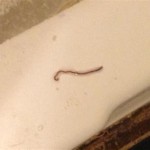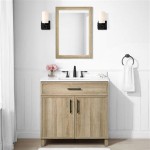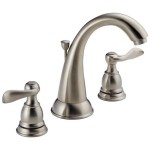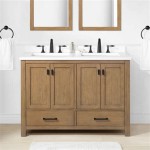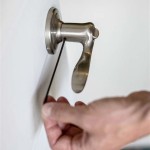Understanding Grohe Bathroom Sink Faucet Aerators: Function, Maintenance, and Replacement
The bathroom sink faucet is a frequently used fixture in any home, and its efficiency and performance are often taken for granted. A crucial component contributing to this functionality is the aerator. Specifically, Grohe bathroom sink faucets, renowned for their design and quality, incorporate aerators that play a vital role in water conservation and user experience. This article will delve into the workings of Grohe faucet aerators, their benefits, maintenance procedures, and replacement considerations.
An aerator, also known as a flow regulator or flow restrictor, is a small device typically screwed into the tip of a faucet. Its primary function is to mix air with the water stream, creating a softer, non-splashing flow. This seemingly simple process provides several significant advantages, ranging from water conservation to improved aesthetic appeal of the water stream.
Grohe aerators are often uniquely designed to complement the specific design profiles of their faucets. While the fundamental principle remains the same, the construction and materials used can vary depending on the faucet model. Understanding the specific type of aerator used in a particular Grohe faucet is essential for proper maintenance and replacement.
Key Point 1: Functionality and Benefits of Grohe Aerators
The core function of a Grohe aerator is to introduce air into the water stream. This aeration has several benefits. Firstly, it reduces water consumption. By mixing air, the perceived water volume is maintained while the actual amount of water used is significantly reduced. This translates into lower water bills and a reduced environmental impact due to conservation.
Secondly, the aerated water stream is less prone to splashing. The incorporation of air creates a more cohesive flow, reducing the force with which the water hits the basin. This minimizes splashing and keeps the surrounding area cleaner and drier. This is particularly beneficial in bathrooms with shallow sinks or high water pressure.
Thirdly, the aerated water stream often feels softer and more comfortable on the skin. The added air reduces the density of the water stream, resulting in a gentler sensation. This can enhance the user experience, especially during activities like hand washing or face washing.
Furthermore, many Grohe aerators include a filter screen that traps sediment and debris present in the water supply. This prevents these particles from reaching the user and potentially causing irritation or damage to the faucet itself. The filter screen improves the overall water quality delivered by the faucet.
Finally, the uniform and consistent water flow provided by the aerator contributes to the overall aesthetic appeal of the faucet. The water stream appears fuller and more controlled, lending a sense of quality and refinement to the bathroom.
Key Point 2: Maintenance Procedures for Grohe Aerators
Regular maintenance of Grohe aerators is crucial to ensure their continued functionality and longevity. Over time, aerators can become clogged with mineral deposits, sediment, and other debris present in the water supply. This can reduce water flow, cause the water stream to become uneven, and even lead to dripping.
The first step in maintaining a Grohe aerator is to identify its location and the method of removal. Most Grohe aerators are threaded and can be unscrewed from the faucet spout. Some models may require a special aerator key or wrench for removal to prevent damaging the faucet's finish. Consulting the faucet's documentation or Grohe's website can provide specific instructions for the particular model.
Once the aerator is removed, it should be disassembled. Grohe aerators typically consist of several components, including the housing, filter screen, flow regulator, and various seals. Each component should be carefully inspected for damage or wear.
The filter screen is the component most likely to become clogged. It can be cleaned by rinsing it under running water and gently brushing it with a soft-bristled brush. For stubborn mineral deposits, soaking the filter screen in a solution of white vinegar and water for a few hours can help to dissolve the buildup.
All other components of the aerator should also be cleaned in the same manner. Pay particular attention to any small openings or crevices that may be clogged with debris. Once all components are clean and free of debris, they should be thoroughly rinsed with clean water.
Before reassembling the aerator, inspect the seals for any signs of wear or damage. Damaged seals can cause leaks and should be replaced. Grohe typically offers replacement seals for their aerators. Once the seals are inspected and replaced if necessary, the aerator can be reassembled.
Reassembly should be done carefully, ensuring that all components are properly aligned and seated. The aerator should then be screwed back into the faucet spout, being careful not to overtighten it. Overtightening can damage the threads or the aerator itself.
After reassembling the aerator, turn on the faucet and check for leaks. If leaks are present, the aerator may not be properly seated or the seals may be damaged. In this case, the aerator should be removed and reassembled, paying particular attention to the seals.
Key Point 3: Replacement Considerations for Grohe Aerators
While regular maintenance can extend the lifespan of a Grohe aerator, eventually, replacement may be necessary. Signs that an aerator needs to be replaced include persistent clogging, reduced water flow despite cleaning, leaks around the aerator, or physical damage to the aerator components.
When replacing a Grohe aerator, it is essential to choose the correct replacement part. Grohe aerators are model-specific, and using the wrong aerator can result in reduced performance or even damage to the faucet. The faucet's documentation or Grohe's website can provide information on the correct replacement aerator for a particular model.
Grohe offers a variety of replacement aerators for their faucets. These aerators can be purchased from authorized Grohe retailers or online. When purchasing a replacement aerator, it is important to verify that it is a genuine Grohe part.
The replacement process is similar to the removal and reassembly process described earlier. The old aerator should be removed, and the new aerator should be carefully installed. Ensure the new aerator is properly seated and that all seals are in good condition. After installation, check for leaks and adjust the aerator if necessary.
In some cases, replacing the entire faucet spout may be a more cost-effective solution than replacing the aerator, especially if the faucet is old or the aerator is difficult to remove. However, replacing the aerator is generally a simpler and less expensive option.
When selecting a replacement aerator, consider the desired water flow rate. Grohe offers aerators with different flow rates to suit various needs and preferences. A lower flow rate will conserve more water, while a higher flow rate will provide a stronger water stream.
Consider the material composition of the replacement aerator. Grohe aerators are typically made of brass or plastic. Brass aerators are more durable and resistant to corrosion, while plastic aerators are less expensive. The choice of material will depend on individual preferences and budget.
Finally, ensure that the replacement aerator is compatible with the faucet's design. Grohe aerators are designed to complement the specific aesthetic of their faucets. Choosing an aerator that is not compatible with the faucet's design can detract from the overall appearance of the bathroom.
By understanding the functionality, maintenance, and replacement considerations for Grohe bathroom sink faucet aerators, homeowners can ensure optimal performance, water conservation, and a pleasant user experience for years to come. Proper care and timely replacement, when needed, contribute significantly to the longevity and efficiency of the entire faucet system.

Grohe 32898001 Faucet Aerator Foam Flow In Buy At Flipkart Com

Grohe 24 Mm Threaded Aerator In Polished Chrome 13952000 The Home Depot

32642003 By Grohe Eurosmart Single Hole Handle S Size Bathroom Faucet 1 2 Gpm Studio41

Grohe Ve 4 In Centerset Single Handle Bathroom Faucet Starlight Chrome 23837000 The Home Depot

23794ena By Grohe Lineare Single Hole Handle S Size Bathroom Faucet 1 2 Gpm Studio41

6pcs M18 5 Aerator Kitchen Bathroom Water Saving Plastic Sink Faucet With 2 Wrench Blue Fruugo No

Grohe Eurocube Single Handle Hole Mid Arc 1 2 Gpm Bathroom Faucet With Drain Assembly In Brushed Cool Sunrise 23670gn0 The Home Depot

Tap Grohe Kitchen Sink Faucet Aerator Angle Bathroom Png Pngwing

Grohe 202943 Eurosmart 5 1 8 Widespread Double Handle S Size Bathroom Faucet

Robotic Arm Faucet Sprayer Universal Rotation Faucets Yahan Sab Behtar Hai
Related Posts
